Mold and mildew, undesirable guests of indoor plant enthusiasts, are forms of fungi which prosper in moist, warm conditions. Contrary to their unassuming presence, they can induce significant damage to your cherished green companions. The International Journal of Botany Studies reveals that these microscopic organisms can reduce plant vigor by up to 70%, impairing photosynthesis and stunting growth.
Mold, distinguished by its fuzzy patches that may appear in various colors, and mildew, typically white or gray with a powdery texture, silently colonize the surfaces of indoor plants. They derive nutrition from organic matter, subtly weakening your plant over time.
This is a widespread challenge encountered by plant lovers, but understanding its extent, preventive measures, and control methods can empower us to guard our indoor plants effectively. This article endeavors to offer a comprehensive guide on tackling mold and mildew, safeguarding the health and beauty of your indoor garden. The knowledge herein will equip you with the skills to identify, treat, and prevent these silent attackers, thus ensuring the longevity and vigor of your indoor plants.
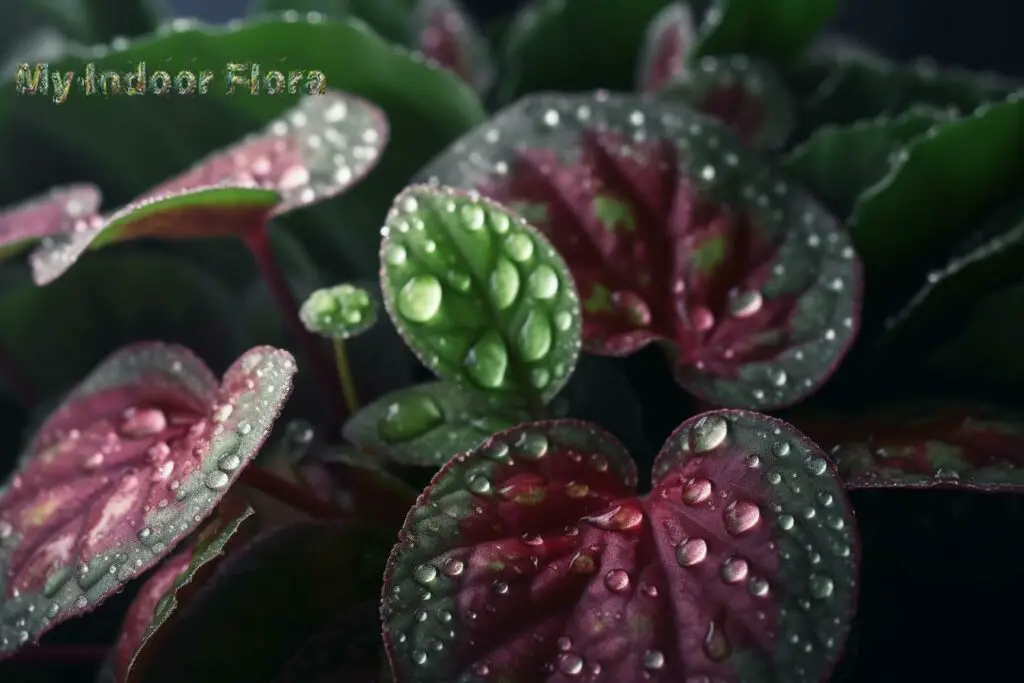
What Are Mold and Mildew and Why Do They Affect Indoor Plants?
Mold and mildew are types of fungi that thrive in warm, damp environments. Mold appears as fuzzy patches in a range of colors, while mildew is usually gray or white with a powdery or downy texture. The microscopic spores of these fungi float in the air, ready to colonize any suitable surface, including your indoor plants.
When they land on your plants, they begin to consume the organic matter, eventually impairing plant growth and health. For instance, they can block the necessary sunlight from the leaves, hinder the photosynthesis process, and in extreme cases, lead to plant death. A 2018 study published in the Journal of Phytopathology showed that persistent mold and mildew infection can reduce the growth rate of plants by up to 70%.
How to Identify Mold and Mildew on Indoor Plants?
It’s important to keep a vigilant eye on your indoor plants for signs of mold and mildew. Visible signs include discolored spots, powdery substances, or fuzzy growth on the leaves, stems, or soil surface. However, mold and mildew aren’t always conspicuous. Your plant may appear perfectly healthy, but in reality, it could be waging an invisible war against these microscopic invaders.
A closer inspection might reveal the subtle signs. Leaves might have a slight sheen or feel sticky to the touch – a possible sign of mold. The plant may also show signs of stress such as wilting, yellowing, or slow growth despite adequate care.
Is Your Indoor Environment Promoting Mold and Mildew Growth?
Mold and mildew can flourish in any environment given the right conditions. High humidity, poor ventilation, low light, and warm temperatures are the four horsemen of fungal doom.
If your plant’s leaves are constantly damp, or the soil is perpetually soggy, it’s a clarion call for molds and mildews. Similarly, poor ventilation traps moisture and creates a fungal paradise. Remember, plants don’t just need air, they need fresh air. A stagnant environment is akin to a microbial time bomb waiting to explode.
A 2015 study published in the European Journal of Plant Pathology highlighted that temperature is a significant factor influencing the prevalence of fungal diseases in plants. While some fungi prefer cooler conditions, most molds and mildews thrive at temperatures between 60 to 80°F.
Low light, on the other hand, doesn’t directly encourage fungal growth but can weaken your plant’s defenses, making it more susceptible to infestations. When it comes to light and plants, balance is key. Too much light can scorch your plants, while too little can leave them vulnerable.
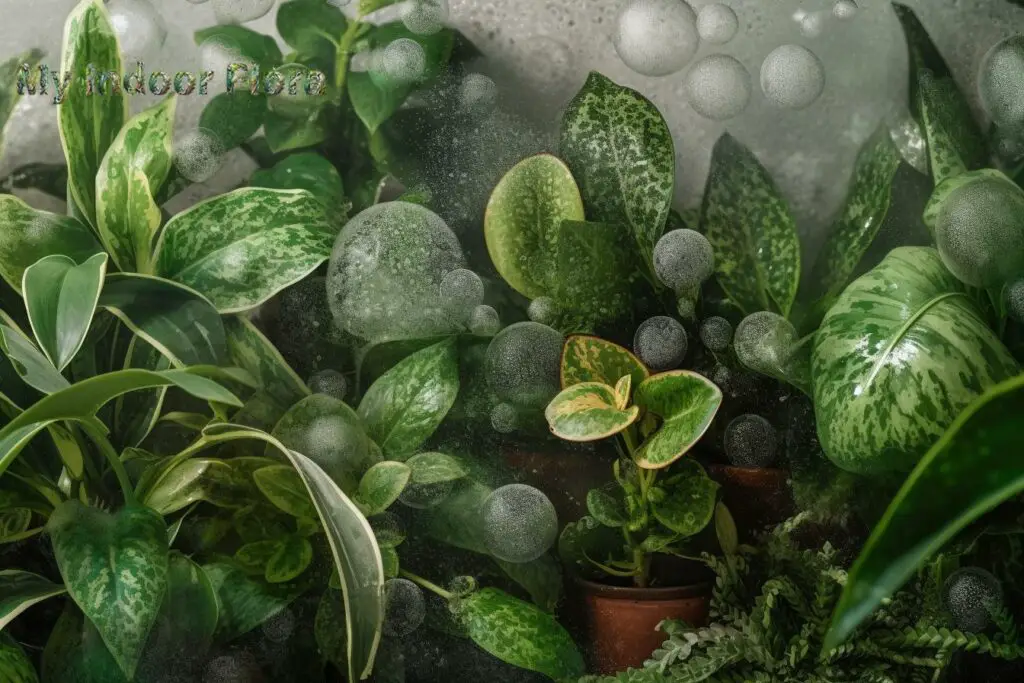
How to Prevent Mold and Mildew on Indoor Plants?
An ounce of prevention is worth a pound of cure. By ensuring your plants are in optimal conditions, you can make it difficult for mold and mildew to gain a foothold. Let’s explore some key strategies for prevention.
Proper Watering Practices
Overwatering is a common mistake among plant parents. It not only drowns your plants but also creates a waterlogged environment, an open invitation for fungi. Here’s how to do it right:
- Water less frequently, but deeply. This encourages roots to grow downwards, making for stronger plants.
- Avoid watering the leaves. Water droplets can magnify sunlight and cause leaf burn. Wet leaves also invite mold.
- Use well-draining soil and pots with drainage holes. Excess water should easily escape, preventing waterlogging.
Good Ventilation
Adequate airflow is crucial for maintaining a mold-free environment. It helps dry out excess moisture and prevents the spores from settling down. Ensure your plants are not crowded together and there is enough room for air to circulate around them. If your plants are in a room with limited airflow, consider using a fan. A gentle breeze can make a big difference.
Correct Lighting and Temperature Control
Each plant species has its own light and temperature preferences. Some plants love basking in the sun, while others prefer the cool, understated elegance of shade. Getting to know your plants’ preferences can help you provide the right environment for them, thereby strengthening their natural defenses against fungi.
In general, most indoor plants prefer temperatures between 60 to 75°F and indirect, bright light. A thermometer and a light meter can help you monitor your indoor environment and make necessary adjustments.
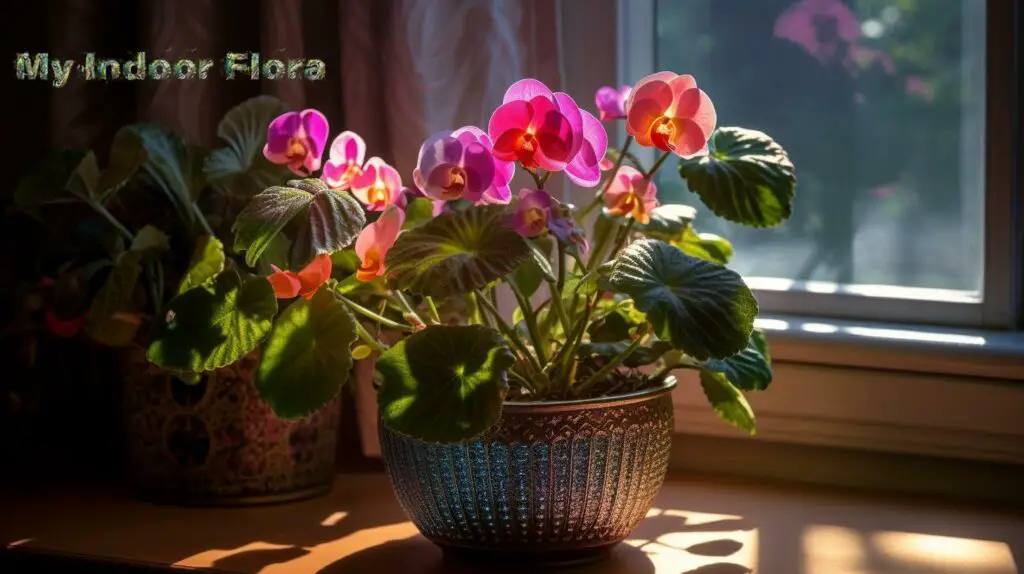
How to Treat Mold and Mildew on Indoor Plants?
Discovering mold or mildew on your plant can be a disheartening sight. But don’t panic. With prompt action, it’s possible to combat these unwanted invaders and bring your plant back to health.
Natural Remedies
For mild infestations, natural remedies can be surprisingly effective. Here are some methods you can try:
- Vinegar: Mix 1 tablespoon of apple cider vinegar with 1 cup of water. Spray this solution on the affected areas once a day until the mold disappears.
- Baking Soda: Dissolve 1 tablespoon of baking soda in 1 quart of water. Add a few drops of liquid soap to help the solution stick to the leaves. Spray it on the mold, taking care to not oversaturate the plant.
- Cinnamon: It has natural antifungal properties. Sprinkle it on the top layer of soil to prevent mold growth.
Chemical Solutions
For severe infestations, you might need to bring out the big guns. Fungicides can be effective in killing mold and mildew but should be used as a last resort due to their potential impact on the environment and beneficial soil microbes. Always follow the manufacturer’s instructions when using these products.
Repotting Your Plant
In extreme cases, when mold has taken over the entire pot, you may need to repot the plant. Remove the plant from the pot, shake off as much of the infected soil as possible, treat the roots with a fungicide, and repot it in fresh, sterile potting mix.
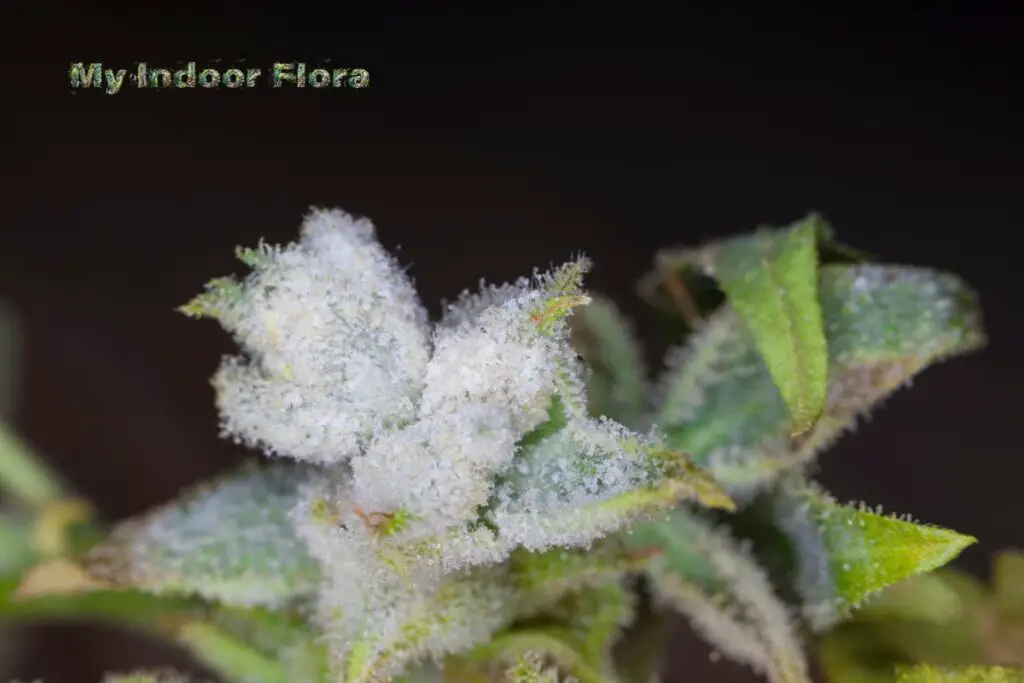
Can Infected Indoor Plants Be Saved and How?
A mold-infected plant isn’t necessarily a death sentence. With early detection and appropriate measures, it’s possible to save your green friends. Let’s delve into the recovery process.
Assessing the Damage
Firstly, you need to assess the extent of the damage. If it’s limited to a few leaves or a small patch of soil, your plant has a good fighting chance. If the entire plant is covered in mold, the battle will be uphill but not impossible. However, if the plant is wilting, losing leaves, or showing signs of root rot, it might be too late.
Rescuing Your Plant
If the damage isn’t too severe, here’s how to salvage your plant:
- Isolate the plant to prevent the spores from spreading.
- Remove the visibly infected parts using sterilized pruning shears. This includes leaves, stems, and even patches of soil.
- Treat the plant with a natural remedy or a fungicide, depending on the severity of the infestation.
- Repot the plant if the soil is heavily infected. Remember to clean the pot thoroughly before reusing it.
Rejuvenating Your Plant
Post-treatment, your plant might look a bit worse for wear. But with patience and proper care, it can bounce back. Ensure it gets adequate light, just the right amount of water, and plenty of fresh air. A balanced, slow-release fertilizer can help replenish the nutrients and give your plant the boost it needs to recover.
What are the Best Practices to Maintain Indoor Plants After Treating Mold and Mildew?
Surviving a mold infestation is a traumatic experience, both for the plant and the plant parent. But it’s also a learning experience. Here are some practices to help you avoid a repeat scenario.
Routine Checks
Regular inspections are key to early detection and prevention of mold. Make it a habit to check your plants at least once a week. Look under the leaves, check the stems, and even the top layer of the soil. Remember, the earlier you catch the mold, the easier it is to eliminate it.
Ongoing Prevention Measures
Continue with the preventive measures mentioned earlier – correct watering, good ventilation, proper lighting, and temperature control. These should become a part of your regular plant care routine.
Seasonal Adjustments
The needs of your plants can change with the seasons. Winter might call for reduced watering, while summer might necessitate shading your plants from the intense afternoon sun. Stay attuned to these needs to keep your plants healthy year-round.
Can Certain Indoor Plants Resist Mold and Mildew Better Than Others?
Just like some people have stronger immune systems, some plants are naturally more resistant to mold and mildew. Plants with waxy or hairy leaves, such as begonias and African violets, are generally more resistant to fungal infections. Similarly, plants that prefer low humidity and well-draining soil, like succulents and cacti, are less likely to fall prey to mold.
Regardless of the species, a healthy plant with strong defenses is your best bet against mold and mildew. This underscores the importance of understanding the specific needs of your plants and catering to them.
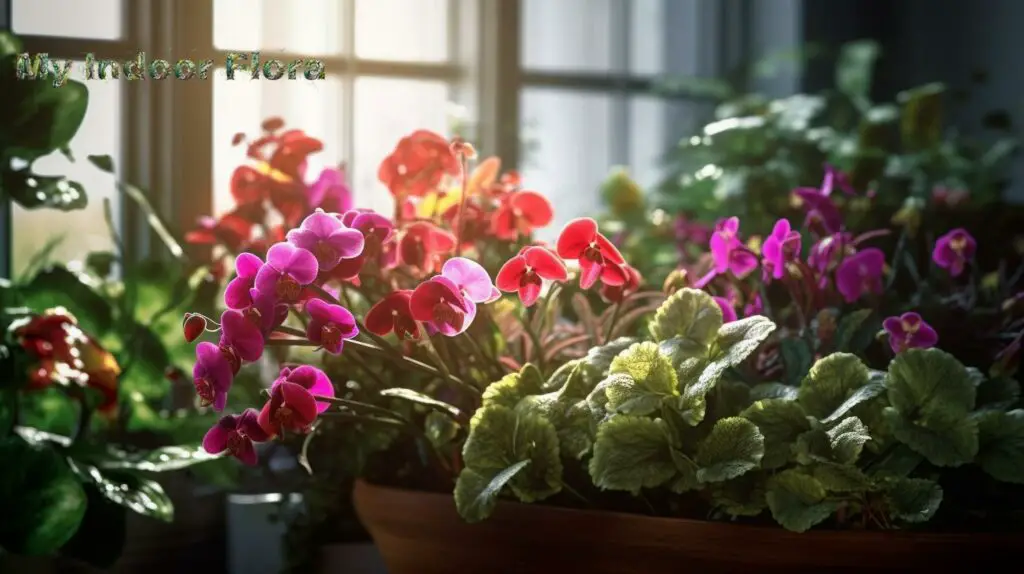
Conclusion
Mold and mildew can be formidable foes for indoor plants, but armed with the right knowledge and tools, you can protect your green companions from these fungal threats. Remember, prevention is always better than cure. Regular inspections, proper plant care, and an optimal growing environment can go a long way in keeping your plants healthy and mold-free.
As a plant parent, it’s crucial to remember that every setback is a set-up for an even greater comeback. So, don’t let the fear of mold and mildew deter you from enjoying the rewarding journey of indoor gardening.
